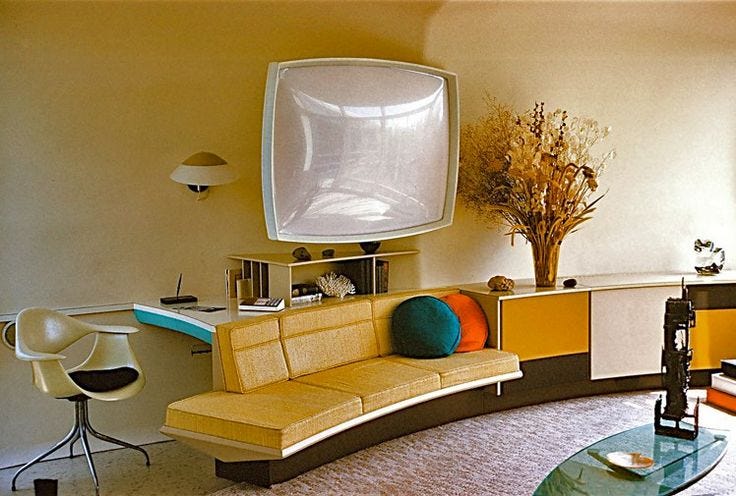
Debunking 4 smart home myths
With the rise of connected thermostats, refrigerators, coffee makers, doorbells, and, well, everything, the smart home is becoming a reality. It’s certainly less of a far-flung fantasy than it was in the 1960s Hollywood days of the Jetsons or Disneyland’s Monsanto House. In 2016, smart home technology is both real and increasingly sophisticated. About 87% of Americans see the value in smart home technology, but surprisingly, only 25% actually have these devices in their own homes. Yet, a new era is upon us, as Gartner estimates a typical home will contain more than 500 smart devices by 2022. Plus, over 50% of consumers surveyed plan to buy at least one smart home product in the next year.
But what does a smart home actually mean, and is it really better than a “dumb home?” While it’s a question that has a nuanced answer, a good place to start is to debunk some commonly held beliefs about the smart home.
Myth #1: Smart homes are only for technical people
Many people assume connected devices and gadgets are difficult to set up and use. In reality, most companies spend lots of time thinking through and testing every little detail of product setup and performance. For most connected devices, once you set them up the first time, they operate, update, and communicate on their own — the ultimate “set it and forget it” experience. In fact, you could argue that the first smart device was the smartphone, which is built to be an extension of users themselves. While they might seem overwhelming at first blush, smart devices and homes exist to make our lives easier, and 53% of consumers are motivated to adopt the smart home because of the convenience it offers. As homes become smarter, devices in them use data, analytics, and sensors to operate on their own, and as voice-control technology improves, the ability to talk to your home like the Star Trek computer becomes more and more of a reality.
Myth #2: Smart homes are easily hackable
In a study conducted by iControl, a smart home installer, 71% of consumers said their primary concern about adopting the smart home is the possibility of a data breach, and the threat of stolen personal information. It’s true that smart homes are subject to hackers, but like any other internet-connected device, precautions can be taken to protect your home and the technology inside of it from attack. Your internet network is the first line of defense, so ensuring you have a proper firewall on your router is key. Encryption is also important so that if someone gains access to any of your information, it’s essentially scrambled, making it unusable. And while it might seem obvious, making sure all your connected devices and your router have very strong, unique passwords is extremely important.
Myth #3: Smart home products can’t work together
It’s true, 60% of consumers say they wish their devices did a better job of ‘talking to’ one another and 49% agree that devices not working together causes more stress in their lives. This fear is likely the biggest barrier to entry for many consumers. With a number of products and ecosystems on the market, we now have an impressive (or overwhelming) smart-home puzzle forming, albeit incomplete. What’s needed to make the experience seamless is an approach that allows products to share data, surface relevant information to consumers, and work together seamlessly, enabling consumers to have products from different manufacturers — like you’re able to do with regular furniture. And we’re getting there, slowly but surely, as the industry moves away from proprietary platforms and towards international standards that emphasize integration and data sharing.
Myth #4: Connected homes are too expensive
Many people assume home technology is reserved for the super-wealthy (like Bill and Melinda Gates’ super-smart home). In fact, 36% of customers claim that the high cost of buying smart home technology is the biggest barrier for them personally. But smart home gadgets may actually save you money: 70% of households with smart-energy devices report saving money on energy consumption. Case-in-point, the Nest Learning Thermostat saves 10–15% on heating and cooling and, based on typical energy costs, saves the average family up to $145 a year. Although investing in a product like this might be a high up-front cost, it ends up paying for itself over the span of less than two years. Plus, these products often receive software updates over time — to improve their performance and add features — ensuring you don’t need to replace them as often to stay up-to-date.
If you asked someone what a “smart home” was a decade ago, they might have described a house where the lights turned on in-sync every day, thanks to timers. But these days, intelligence in the home goes far beyond a timer or even a TiVo, and is more accessible than ever. A smart home should be a place full of your favorite things, operating at peak efficiency, making your life more enjoyable. And, of course, all if this is moot if you don’t have a home WiFi network that just works.


You must be logged in to post a comment.